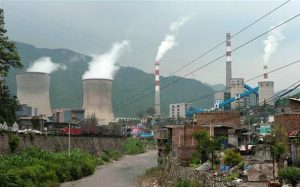The US has pledged to cut greenhouse gas emissions by 26-28% from 2005 levels by 2025 in its contribution to UN climate talks, the second major emitter to lay down its marker head of a landmark summit at the end of the year.
Climate scientists and activists greeted the announcement as an important step to strengthen global climate action. At the same time, some cautioned that the proposed contribution would not go far enough to contribute to a significant slowing down of global warming.
“This is a serious and achievable commitment,” said Jennifer Morgan, Global Director of the Climate Program at the
World Resources Institute. In the absence of Congressional action on climate change, which is unlikely in the foreseeable future, Morgan thinks that the administration has been realistic about what can be achieved using existing and proposed federal regulations. “While we hope that more can be done in the future, the current proposal comes with a credible implementation plan.”
Following the announcements by the EU, Switzerland, Norway and Mexico, the US entered its submission right before a March 31 deadline requested by the UN. The date is a rather symbolic at this point since most nations, including China and India, made clear that they will wait until the second half of this year to outline their official goals.
The EU’s target of cutting emissions 40 percent below 1990 levels by 2030 is more ambitious overall. But Morgan points out that while policymakers in Washington and Brussels have used different baselines, the average annual pace of reductions required to meet the respective goals is comparable. As a
White House fact sheet points out, meeting the 2025 target would require doubling the current pace of reduction from 1.2% per year to between 2.3% and 2.8%.
The US submission lists planned reductions in the following areas to support its overall emissions target:
· Coal plants: The US Environmental Protection Agency (EPA) will within months finalise regulations to cut emissions from new and existing power plants. Guidelines issued in 2014 set the goal to reduce power sector emissions 30% below 2005 levels by 2030.
· Transportation: The Department of Transportation and the EPA plan to set new emissions and fuel efficiency standards for medium and heavy-duty vehicles by March 2016, building on the first ever set of such standards that are in effect from 2014 through 2018.
· Energy efficiency: The Department of Energy has a goal to reduce carbon pollution by 3 billion metric tonnes of carbon dioxide equivalent by 2030 using energy conservation measures. It has finalised standards for 29 categories of appliances and equipment, and plans to expand a building code determination for commercial buildings to the residential sector.
· Short-lived pollutants: The EPA and other agencies are taking action against methane emissions from landfills, coal mining, agriculture and the oil and gas sector. The EPA is also working on cutting domestic emissions of hydrofluorocarbons (HFCs), a potent industrial greenhouse gas used in refrigerators and air conditioning, and will work to cut them globally through the Montreal Protocol.
The US proposal implicitly recognises that these measures and those of other countries will not reach far enough to restrict the rise of global temperatures below 2 degrees Celsius – as would be needed to avoid devastating climate change. It states that “deep, economy-wide emission reductions of 80% or more” will be necessary by 2050. The 2025 target will therefore only be a first step on “a path to deep decarbonisation.” According to Morgan, the aim for much deeper cuts long-term sends “a strong signal to investors and other countries that the future is low-carbon.”







